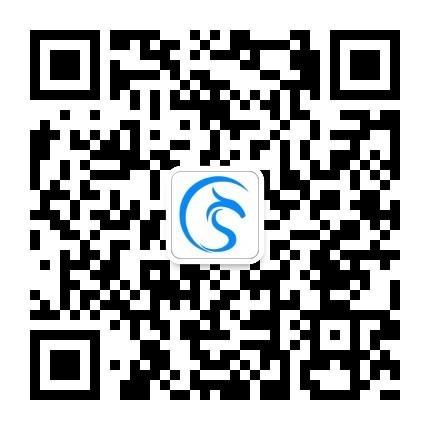Is It Worth Doing SEO for a Promo Page That Only Lasts 3 Months?
This is a real dilemma for many e-commerce marketers—traditional SEO takes time, but promo campaigns need traffic *now*.
This article skips the theory and dives into practical strategies: how to use “lightweight SEO tactics” to get the most search exposure within a limited timeframe.

Table of Contens
ToggleHow Much SEO Traffic Can You Get in 3 Months?
“Doesn’t SEO take at least six months to show results?” That belief leads many people to skip optimizing short-term pages entirely.
But here’s the truth: if your page meets certain conditions, it’s totally possible to grab search traffic—and even conversions—within just 3 months.
1. Google Indexing Timeline: A New Page ≠ Starting from Scratch
- The harsh reality: A brand-new page on a fresh domain will likely only get indexed in 3 months—not ranked (unless your content is super unique)
- Opportunity: If the page lives under a main site that already has traffic (like
www.site.com/summer-sale), it can get indexed in 1–4 weeks - Case study: A beauty brand’s summer promo page was indexed in 18 days and ranked #6 for “summer makeup sale” after 42 days—all thanks to the main site’s authority
2. Leverage Main Site Authority: Subfolders Work Better Than Subdomains
- Subfolder advantage: Inherits domain authority from the main site; Google crawlers visit more frequently (especially for sites with 1,000+ daily users)
- What not to do: Don’t use a separate subdomain like
promotion.site.com—it’s like starting from scratch
Tips:
- Always place promo pages under the main site’s folder structure (keep the URL clean—avoid going beyond 3 levels deep)
- Add internal links to the promo page from high-traffic pages (like the homepage or category pages)
3. Estimate Traffic: Use Search Volume Data to Avoid Wasting Time
The basic formula:
Estimated traffic = Search volume × Click-through rate (CTR) × Seasonality factor
Example:
- Target keyword “back to school sale 2023” gets 2,000 searches/month; say you rank #5 (CTR ~6%)
- Estimated monthly traffic: 2,000 × 6% × 0.8 (seasonal factor) ≈ 96 clicks
Watch out:
- Be careful of keywords with “fake high volume” (ads eat up most of the traffic)
- Use Ahrefs to check the *actual* number of clicks per keyword
Ahrefs Keyword Comparison Example:
- Keyword A: “shoes sale” – Search volume 12,000 → Only 890 real clicks (ads dominate + tons of junk results)
- Keyword B: “running shoes discount code” – Search volume 300 → 210 real clicks (clear buyer intent)
Bottom line: For short-term pages, always go for long-tail keywords with clear intent like Keyword B.
Forget Long-Term Keywords, Target “Real-Time Search” Traffic
“High search volume = high traffic?” That thinking has misled a lot of people.
A huge mistake with short-term promo pages is chasing generic long-term keywords like “best headphones”—they’re super competitive and don’t always indicate purchase intent.
What really drives conversions are keywords with time sensitivity and clear promotional intent.
1. Two Must-Target Types of Real-Time Keywords (With Real Examples)
Event/Holiday-Based Keywords:
- Example 1: “Black Friday deals 2023” – traffic spikes in Oct–Nov, then crashes
- Example 2: “back to school sale August” – search volume in August is 17x higher than other months
- Tool Tip: Use Google Trends to visualize seasonal keyword swings (see chart below)
Product + Promo Action Keywords:
- Example: “Dyson V10 refurbished discount” – users know what they want and are ready to buy
- What not to do: Optimizing for broad terms like “cheap vacuum cleaner” attracts price shoppers, not buyers
2. 4-Step Filtering Method: Quickly Find High-Converting Keywords
- Set a time frame: In Google Keyword Planner, filter for keywords with 100+ searches in the past month
- Look for question-based terms: Prioritize keywords with “when/where/how” (e.g., “Where to buy iPhone 14 with free shipping”)
- Avoid brand keywords: People searching “Nike promo code” will just go to the official site—hard to win that traffic
- Manual intent check: Google the keyword—if the top 3 pages are promo/discount pages, it’s worth targeting
3. Use Google Trends to Spot “Breakout Keywords”
Step-by-step:
- Search your niche in Google Trends (e.g., “fitness equipment”)
- Set time range to “Past 30 days” to spot fast-rising queries (e.g., “gym mats clearance”)
- Check the actual search volume in Ahrefs to make sure it’s legit
Example: A home goods brand spotted a spike in “office chair Prime Day deals,” built a page early, and got 23 daily leads during the promo week
4. Pitfalls to Avoid: These Keywords Bring Traffic But No Sales
Looks like high traffic, but barely converts:
- “best [product name]” → Users are still researching, not ready to buy
- “[brand name] reviews” → Traffic goes to review sites, not your promo page
Keywords dominated by big platforms:
“Amazon coupon code” → 90% of traffic gets scooped up by Amazon and third-party coupon sites
Data comparison example:
- Keyword A: “summer dresses” Monthly search: 200K → CTR: 2.3% (mostly browsing)
- Keyword B: “summer dresses under $20” Monthly search: 1,200 → CTR: 9.8% (clear buying intent)
Conclusion: Short-term promo pages should focus resources on B-type keywords. Even if the search volume is 5x lower, the conversion rate is 3x higher.
Lightweight Tweaks That Boost Conversions
“Optimize the page? Gotta tweak code, add backlinks, and stuff it with content?” That’s classic over-optimization thinking.
For short-term promo pages, SEO isn’t about getting technical—it’s about making small changes for maximum conversion.
Instead of rewriting the whole page over 3 weeks, just focus on these 5 things that users see *right away* and that drive them to take action.
1. Title & Meta Description: Add a Sense of Urgency
Template formula:
[Discount] + [Main product] + [Deadline]
Example:
70% Off Winter Coats Sale | 500+ Styles | Ends Jan 15
Watch out:
Avoid stuffing keywords (like repeating “Cheap, Affordable, Discount”)
Mobile-first: Keep titles under 50 characters so they don’t get cut off
2. Above-the-Fold: Pass the “3-Second Test”
Key elements layout:
- Countdown timer: Show “Only X hours left” instead of a static end date (Tool tip: CountdownTimer Ultimate)
- Promo code: Show the code directly (e.g. “SALE30”) instead of “Click to get” (reduces bounce)
- CTA button: Use contrasting color + hover effects (like slight zoom), but don’t use annoying pop-ups
What not to do: Don’t start with your brand story or a CEO quote—nobody’s here for that
3. FAQ Section: Remove Purchase Barriers Up Front
Must-answer questions:
- “Can I stack promo codes?” → Cuts down on customer service messages
- “Are promo items returnable?” → Reduces hesitation about post-sale issues
- “Can I pre-order if out of stock?” → Prevents users from leaving
Answering tips:
- Give clear Yes/No answers (e.g. “Is shipping free? ✅ Free shipping across the US”)
- Re-use keywords naturally in the answers (e.g. “How to track shipping? You can check FedEx tracking on your order page”)
4. Image Optimization: Speed Over Beauty
Quick wins:
- Use TinyPNG to compress images (cut file size by 60%+, quality loss <5%)
- Rename files from “IMG_1234” to something like “red-dress-back-to-school-sale.jpg”
- Add alt text: describe the image + include promo keywords (e.g. “Girl with suitcase joining back-to-school sale”)
Data example: One clothing promo page cut load time from 4.1s to 2.3s after image compression, and saw a 22% jump in conversions
5. Social Proof: Real-Time Nudges Boost Confidence
Low-cost ideas:
- Live notification bar: Show “X people just ordered in the last hour” (Tool: WooCommerce Sales Notifier)
- Social screenshot wall: Show timestamped positive comments (e.g. “2 hours ago @Lisa: Just saved $50 with this code!”)
- Stock warnings: Say “Only 3 left” instead of “In stock”
Toolbox:
- Countdown timer: CountdownTimer Ultimate (free)
- Image compression: TinyPNG (up to 20 images at once)
- Speed test: PageSpeed Insights
- Live sales pop-up: Sales Notifier Plugin ($9/month)
Post-Takedown Strategy: Turn Short-Term Traffic into Long-Term Assets
“Delete the page right after the campaign ends?” That’s the worst move you can make. No contest.
When you take down a promo page, its existing SEO value and user behavior data are wiped out.
But if handled right, that short-term traffic can fuel long-term growth for your site—and even help you build a targeted audience for your next campaign.
1. Set Up 301 Redirects: Send Expired Traffic to High-Value Pages
Wrong move: Just delete the page → triggers a 404 error, Google penalizes your ranking
What to do instead:
- Redirect to similar campaigns: Point your “Summer Sale” page to the “Fall Sale” page using a 301 redirect (you’ll keep over 80% of the page’s SEO power)
- Redirect to product pages: If the promo items are regular products, send users to their product pages (e.g., Promo Page A → Product Page B, which can boost conversion rates by 13%)
Recommended tools:
- WordPress users: Use the Redirection plugin for batch redirects
- Shopify stores: You can set target URLs directly in the backend
2. Repurpose Content: Reuse High-Quality Sections on Your Site
Reusable content assets:
- User reviews: Take “limited-time rave reviews” from your campaign page and embed them in the social proof section of your product pages
- Data insights: Use sales or customer location data from the campaign as proof of brand strength on your main site
- FAQs: Turn commonly asked campaign questions into a “Common Questions” section on product pages
Example: A baby products brand reused their “1000+ reasons customers chose us” section from a promo page on their homepage—boosting average time on site by 20%
3. Analyze the Data: Identify High-Converting Keywords and Refine Your Strategy
Key data to export:
- Google Search Console: Export keywords that brought real clicks to your promo page
- Google Analytics: Find search terms with over 5% conversion rates (Path: Behavior → Site Content → Landing Pages)
How to use it:
- Add high-converting terms to your product page Meta descriptions (e.g., “organic cotton sheets” was originally for a promo, but adding it to the product page boosted traffic by 35%)
- If users searched for “discount code” but didn’t find one, make sure to include that in your next campaign
4. What to Avoid: These Mistakes Will Ruin Your Efforts
- Redirecting to unrelated pages: Sending users from a promo page to the homepage → doesn’t meet expectations, bounce rate over 70%
- Leaving outdated info live: Don’t forget to remove countdown timers or expired promo codes → it kills trust fast
- Ignoring backlink cleanup: If other sites are still linking to your old promo page, that’s wasted SEO juice
Checklist:
- 1 week before takedown: Add 301 redirects to new pages (e.g., fall promo page or product page)
- Within 3 days after takedown: Submit a removal request in Google Search Console to speed up SEO handover
- Within 7 days after takedown: Finalize and archive your data analysis report, and share it with your ops/design team
The SEO value of short-term pages isn’t about “should you do it,” but “is it worth doing.”
Use the tools mentioned to estimate your ROI. Even just 50 extra clicks with a 5% conversion rate could bring in $500 in extra profit.
Let the data talk—test small, then scale up.





